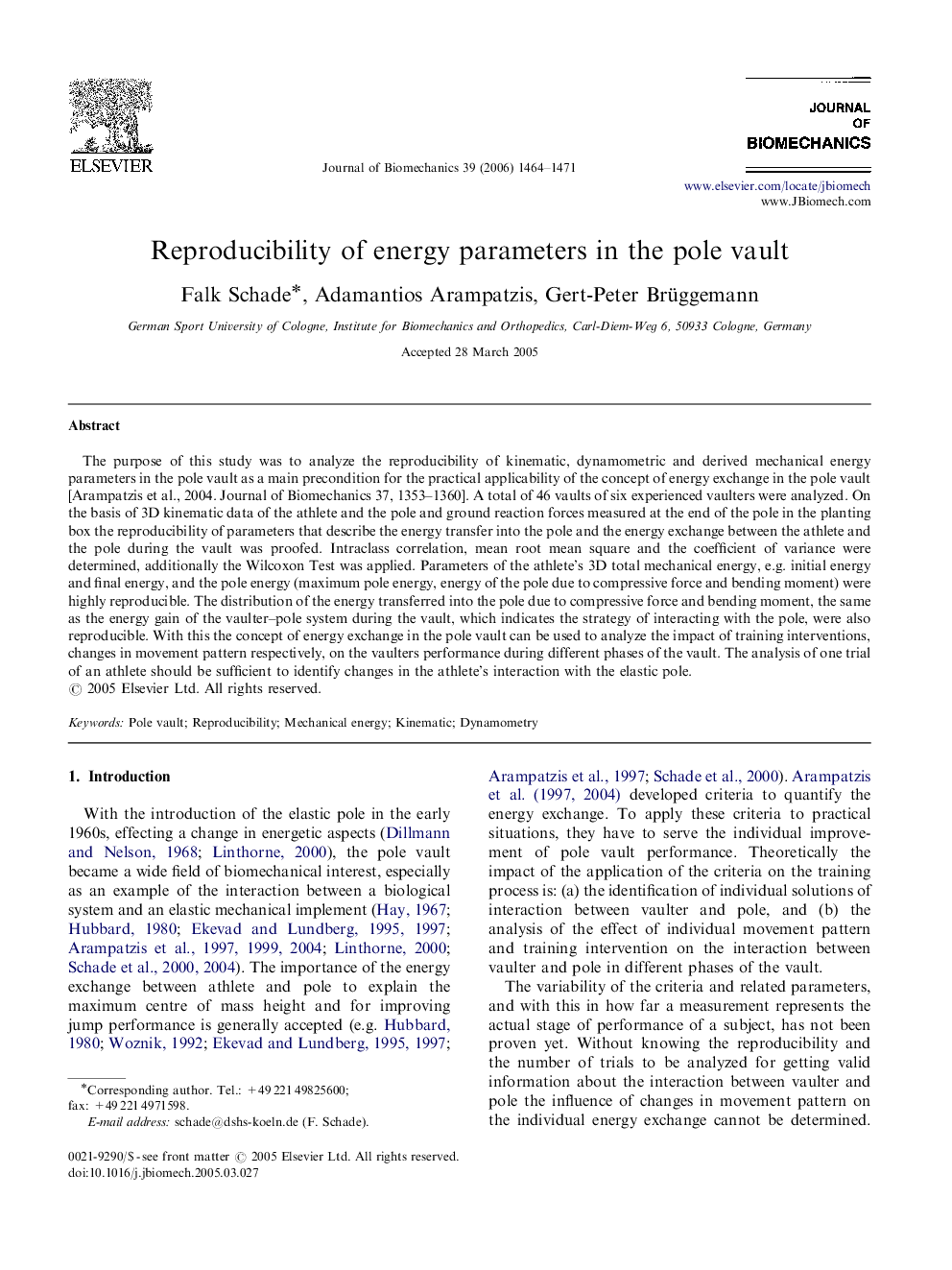| Article ID | Journal | Published Year | Pages | File Type |
|---|---|---|---|---|
| 874777 | Journal of Biomechanics | 2006 | 8 Pages |
The purpose of this study was to analyze the reproducibility of kinematic, dynamometric and derived mechanical energy parameters in the pole vault as a main precondition for the practical applicability of the concept of energy exchange in the pole vault [Arampatzis et al., 2004. Journal of Biomechanics 37, 1353–1360]. A total of 46 vaults of six experienced vaulters were analyzed. On the basis of 3D kinematic data of the athlete and the pole and ground reaction forces measured at the end of the pole in the planting box the reproducibility of parameters that describe the energy transfer into the pole and the energy exchange between the athlete and the pole during the vault was proofed. Intraclass correlation, mean root mean square and the coefficient of variance were determined, additionally the Wilcoxon Test was applied. Parameters of the athlete's 3D total mechanical energy, e.g. initial energy and final energy, and the pole energy (maximum pole energy, energy of the pole due to compressive force and bending moment) were highly reproducible. The distribution of the energy transferred into the pole due to compressive force and bending moment, the same as the energy gain of the vaulter–pole system during the vault, which indicates the strategy of interacting with the pole, were also reproducible. With this the concept of energy exchange in the pole vault can be used to analyze the impact of training interventions, changes in movement pattern respectively, on the vaulters performance during different phases of the vault. The analysis of one trial of an athlete should be sufficient to identify changes in the athlete's interaction with the elastic pole.
